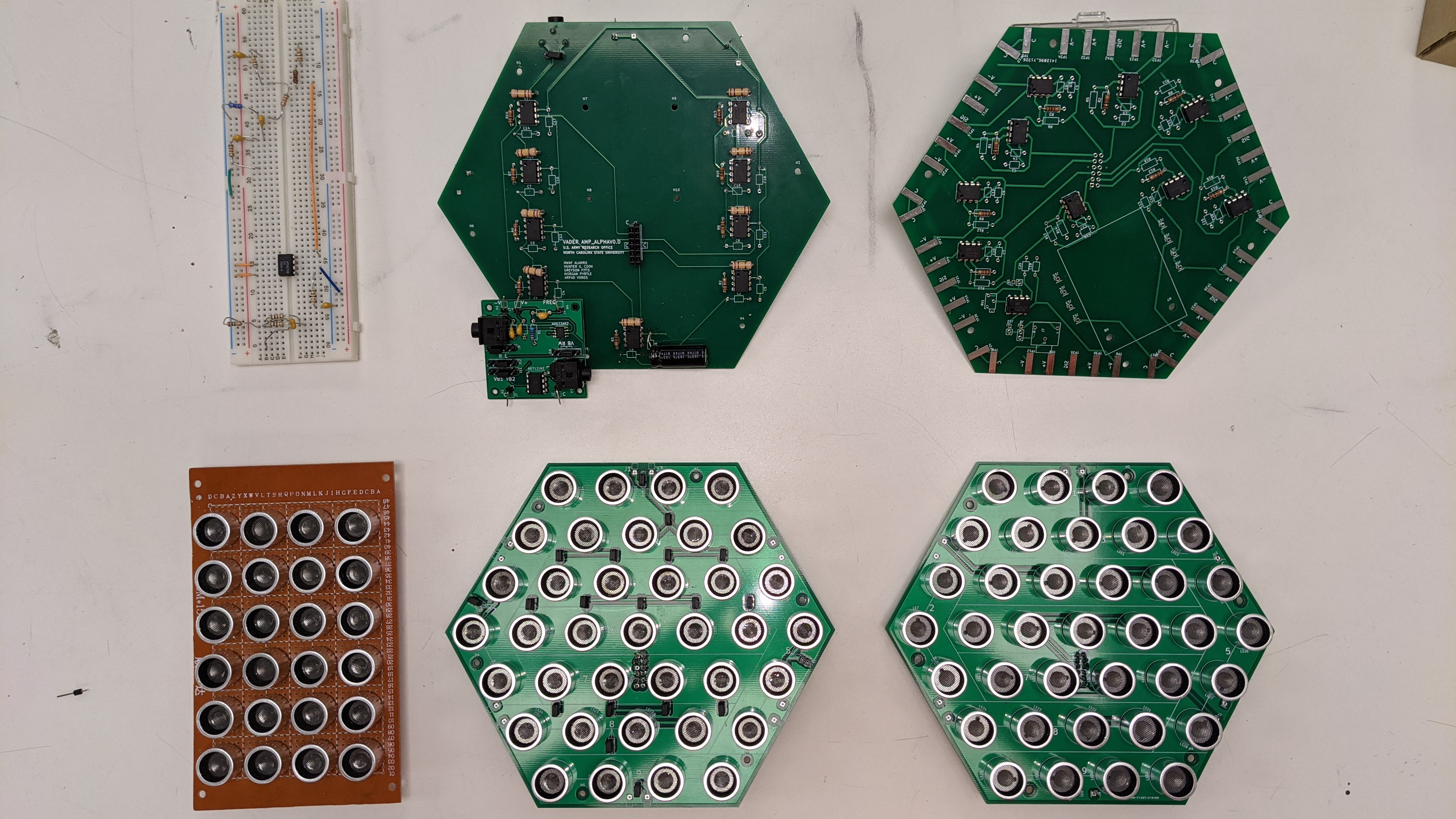

ECE 484 (Senior Design) Team: Vectorized Acoustic Deterrence of Elephants Research, or VADER
Aug 2020 - May 2021 — Raleigh, North Carolina
Overview:
Since 2013, the US Army Research Office (ARO) has tried various methods in preventing human-elephant conflict in sub-Saharan Africa. Farmers, who have their entire livelihoods in their crops, must be on constant alert and will respond with lethal force when elephants trespass onto their farms. Elephants do not intentionally raid farms, but when agitated elephants can be lethal to humans via trampling. To prevent this, the ARO has tried
Now the ARO is attempting to create another acoustic deterrence device, similar to the LRAD, but more passive. The idea is to make a 'wall of sound', a barrier using directional acoustic waves surrounding a local farm or other infrastructure. The 'wall' is simply used as an analogy throughout this page, but ideas like tracking sound beams are also entertained.
The ARO has come to North Carolina State Unviersity for a senior design team to provide a proof-of-concept for this audio deterrence device. As expected, I am part of this team titled: Vectorized Acoustic Deterrence of Elephants Research — or V.A.D.E.R., because why not :)
Out of various methods in making directional sound, a parametric array was chosen. The parametric array using an array of small ultra-sonic transducers to emit modulated soundwaves. Since the directionality of acoustic waves, when emitted orthogonal to some surface (speaker), the wave has an decreasing width (more narrow, therefore more directional). An incredible property exists in non-linear acoustics, where scattering of compressional waves roughly result in the envelope of the pre-scattered wave. Meaning that if an sound wave is amplitude-modulated at an ultrasonic carrier frequency, no one will be able to hear the soundwave until it interacts and scatters with large non-linear gradient in medium (e.g. sound traveling through air then hitting a dense wall), because it will get demodulated upon contact. More on this here.
This was a two semester project, spanning the 2020 academic year. A demonstration of our prototype and our final presentation is shown below.
Vid 1: Prototype Demonstration
Vid 2: Final Presentation (speaking: Arpad Voros and Hunter G. Cook)
Personal Statement:
I have been the team lead throughout the entirety of this project.
This project is was a testament of patience and hard work, as one other team member (Hunter G. Cook) significantly carried their respective workload. Without exaggeration, the two of us did all the necessary research, prototyping, simulation, and calculations for this project to come to fruition. The other 3 team members helped with deliverables to show progress to our instructors + sponsors, but no help on the project itself.
The project resulted in an astounding success, as the team won multiple awards and outperformed other projects at NCSU's ECE Senior Design competition.
My Contribution:
Group Project (5 members)
First semester (Fall of 2020), I did a disproportionately large amount of work on researching different directional acoustic techniques and performing acoustic and electronic simulations of each, to gauge which technique would be selected. I also designed CAD models, made majority, if not all, the decision making (for part selection, design selection, etc.) since nobody else stepped up for the job. I did not want it to be like this, as a more cohesive team environment is most optimal.
Second semester (Spring of 2021), one of my team members (Hunter G. Cook) began to focus his attention more onto this project to help me out. We had already ordered materials by now, so together we worked on prototyping, researching different modulation techniques for our emission of sound, and further development/polishing of the project. Instead of pulling roughly 80% of the total workload first semester, this semester I happily split the workload and co-led the team with Hunter to finish strong.
Literature:
Progress presentations in reverse chronological order: (Slide animations and GIF's from PPT do not transfer over to PDF)
5. Design Day Presentation
Fig 1: Design Day Presentation

Fig 2: Prototype Stages
Media Citation(s):
Videos - Ownership of NCSU & ARO, produced by Arpad Voros & Hunter G. Cook, hosted on https://www.youtube.com/c/HunterGCook